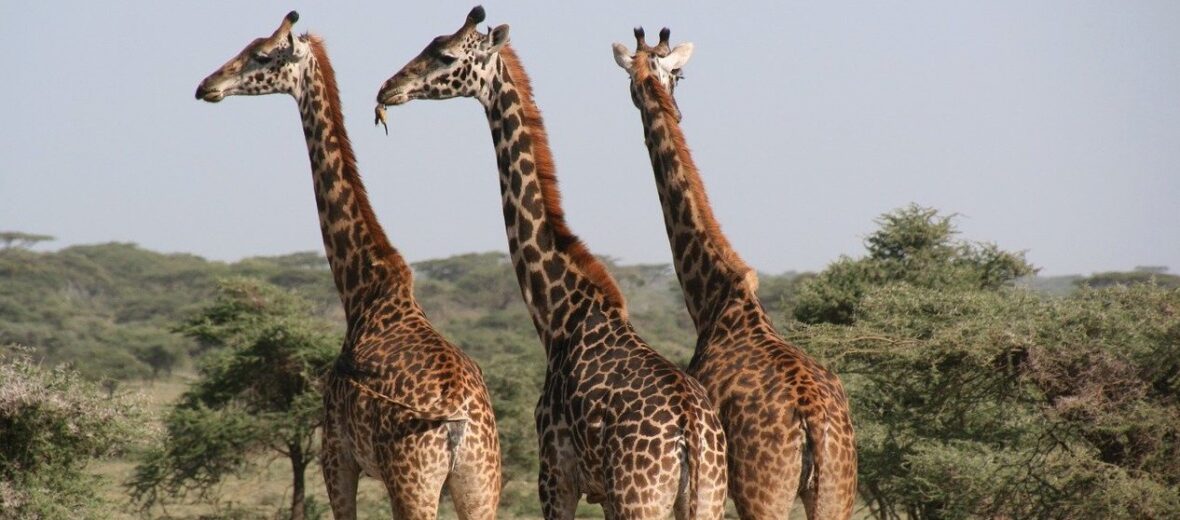
Being the tallest animal on earth has its ups and downs. Giraffes are not the tallest animal that ever lived, but they are the tallest alive today. There are lots of cool facts about the giraffes and that’s no tall tale. These beautiful and majestic creatures are on the brink of extinction though. They are listed as Critically Endangered by the IUCN. This is due to habitat destruction, competition for food with livestock, and military conflict.
First the Stats…
Scientific Name: Giraffa camelopardalis
Weight: Up to 1,800 lbs.
Height: Up to 20 feet
Lifespan: Up to 26 years
Now on to the Facts!
1.) Giraffes only need water every couple of days. The majority of their water comes from the plants they eat. Good thing too as giraffes are a bit awkward looking when they do need to drink water.
2.) Giraffes sleep standing up. If they do settle in for a nap on the ground, it is only for a short time.
3.) Giraffe tongues are up to 20 inches long!
4.) Giraffe females will visit the location they were born to give birth.
5.) Baby giraffes are 5 feet fall when they’re born.
But wait, there’s more on giraffes!
6.) Both males and females have ossicones (hair covered horns) but the males actually use them for fighting. This fighting is called necking.
7.) A giraffe can eat up to 75 lbs. of food a day! They need to eat this much as their diet of leaves isn’t all that nutritious and they need to eat loads in order to stay healthy.
Did you know…?
Giraffes can run, for short distances, up to 35 mph!
8.) A giraffe has the same number of vertebra as we humans. They are just longer (around 10 inches).
9.) In order to pump blood to all the extremes of their body, giraffes have a 25 pound heart that measures approximately 2 feet long!
10.) A male giraffe can tell if a female is ready to mate by tasting her urine. Yummy!
But wait, there’s still more on giraffes!
11.) Their jugular veins have a series of 1-way valves that prevent extra blood flow to their brain when they drink.
12.) Unlike other quadrupeds, giraffes walk via moving both legs on the same side of their body together. Left side, right side, repeat.
13.) Besides running away, giraffes have one heck of a kick that they sometimes use to defend themselves against predators.
14.) Lions, leopards, hyenas, and African wild dogs all prey on giraffes.
Now a Short giraffe Video!
Also, check out the Critter Science YouTube channel. Videos added frequently!
Want to suggest a critter for me to write about? Let me know here.



